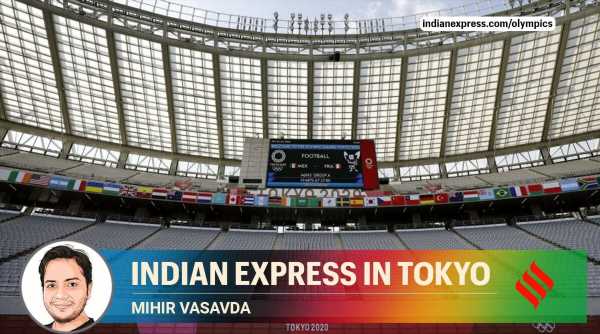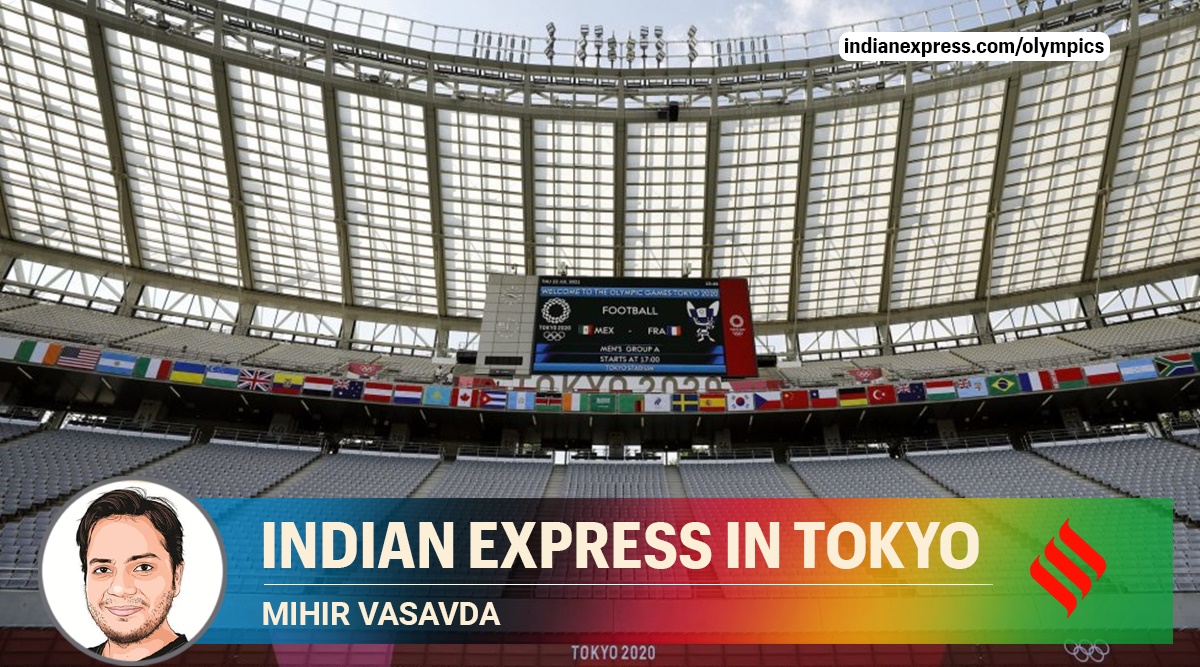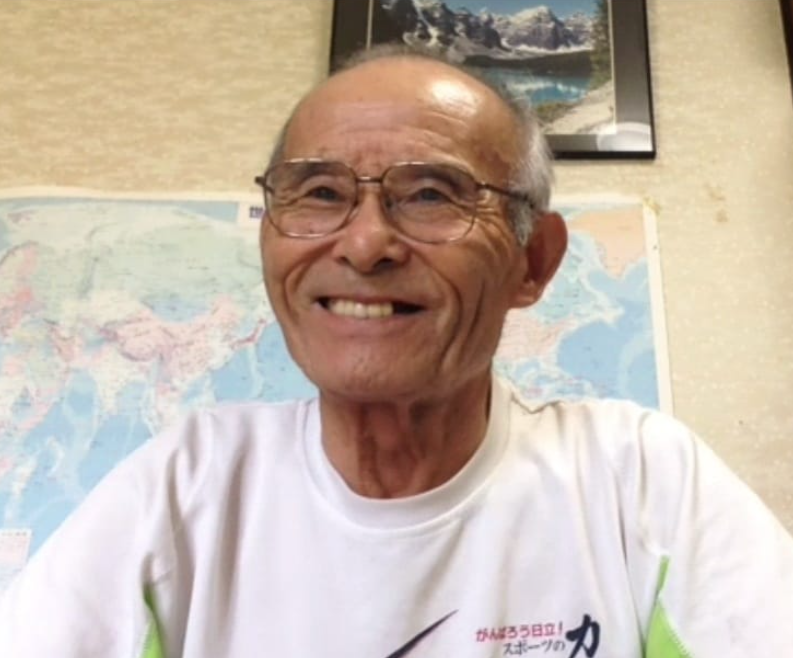On the eve of the opening ceremony of the 2020 Games, which will be held at the same stadium, it’s tough to resist comparisons between then and now. If Tokyo was swept in a wave of optimism in the days leading up to the 1964 Games, the mood couldn’t be starker now.
Akira Tokairin is talking about his I-was-there moment. “I was sitting on the second corner so had a great view of the pole vault,” he begins.
Nothing about Tokairin suggests he is 83 years old. He climbs mountains, won a masters giant slalom competition last winter, passionately follows rugby, talks in a firm tone and rattles off stories from 47 years ago as if they took place yesterday.
That day, October 15, 1964, he was at Tokyo’s National Stadium to watch his two friends, Hisao Morita and Yoshimasa Torii, compete in the Olympic pole vault competition. And although neither of them reached the final, by the time the Games ended, Japan had vaulted into a new era.
“Those years were a very low point in Japanese history and the 1964 Olympics became a springboard for a great future. There was a lot of positivity in the build-up to those Games,” Tokairin says.
On the eve of the opening ceremony of the 2020 Games, which will be held at the same stadium, it’s tough to resist comparisons between then and now. If Tokyo was swept in a wave of optimism in the days leading up to the 1964 Games, the mood couldn’t be starker now. “You can’t compare the 2020 Olympics to 1964,” the Tokyo resident says. “1964 was a much bigger deal.” Especially for Tokairin’s generation.
READ | Tokyo 2020: Protest Games or Woke Olympics?
Tokairin was born on Valentine’s Day in 1938. His mother died of illness soon after his birth and his father passed away towards the end of the war. “His stepmother couldn’t afford to raise him, his older brother and younger sister, so they were split up and sent to live with aunts and uncles’ families,” says Brett Larner, Tokairin’s son-in-law. “He had a blood relationship with the aunt he was sent to live with. Her husband was the direct descendent of a local samurai lord and very strict, which is why he left to start work as soon as he finished high school.”
Such stories, Tokairin’s daughter Mika says, are far too common among her father’s generation. And for most of them, the 1964 Olympics turned out to be a groundbreaking and life-altering moment. They were the first to be held in Asia, and the first in a non-Western country.
Former IOC marketing director Michael Payne says there were huge fears among the public that Japan would embarrass itself in front of the whole world. Instead, they turned out to be – as the Sports Illustrated noted back then – the sign of “Japan’s maturity as a modern state”.
Those were dubbed as the sci-fi Olympics. There were innovations that were far ahead of their times, including the first-time use of computers and live pictures being beamed across the globe through satellites. As an engineer with a Japanese multinational conglomerate, Tokairin was at the centre of many of those transformational moments.
Those years, the second half of the 1950s to early 1960s, came to be known as 3Ks, based on Japanese pronunciations – kuruma (cars), karaterebi (colour TVs) and kura (coolers). “Those are the things I immediately associate with the 1964 Olympics. I was really busy with work and really happy to be with one of the companies that was a part of the transformation process,” Tokairin says.
The transformation wasn’t restricted to technology. The impact on the infrastructure, too, was enormous. “Tokyo was still in a rebuilding phase from the post-war years and for the Olympics, there was investment in the form of highways and the Shinkansen bullet train system. That kind of infra development had a transformative effect on the city and the country… it lasts till today,” he says.
It does, indeed. The highway that links Haneda Airport to the downtown was constructed as part of the $280 million project launched by the government back then to solve the traffic problem. Millions more were spent on housing and sports facilities, many of which will be used even for these Games.
“The 1940 Olympics, which Japan was to host, were cancelled due to the World War. But with the post-war reconstruction, everyone was excited about the 1964 Games and everybody wanted to see it,” Tokairin says. “But of course, everybody could not go to the venues because all tickets got sold so that kind of drove a lot of the spread of technology, for example, colour TVs.”
READ | Tests, re-tests, more tests: Tokyo 2020, an Olympics like no other
Earlier this week, Japan Times reported a surge in TV sales ahead of the opening ceremony. But the reasons this time are completely different. This demand has roots in the fact that the Olympics will be held without fans in the stadiums due to the Covid-19 pandemic.
Tokairin was looking forward to watching his fourth Olympics. So far, he has been to three Olympics held in Japan, including the two Winter Games. This Games, had tickets to watch the track and field events at the National Stadium, where he watched his two friends compete in the pole vault competition. Now, he will watch it at home.
But that isn’t the only disappointment he will have to live with. When Tokyo won the right to host these Olympics in 2013, the central idea was to show the world that the country had recovered from another trauma – the 2011 earthquake, tsunami and a nuclear accident that severely impacted Fukushima, in the country’s northeast.
All the claims of these being the ‘Recovery Games’, as the organisers call it, feel hollow to the Tokyoites. “Most of the legacy will be in the sports venues themselves. They haven’t had the same kind of infrastructure development as in 1964,” Tokairin says. “The new National Stadium will last for some time, some of the other venues will also last. So for the athletes, it’ll be a lasting legacy. But not so much for the average person.”
There is hope that once the attention turns to sport, the mood among the locals will begin to change. But as sequels often go, this one doesn’t seem to be anywhere close to the hype of the original one.
Source: Read Full Article




